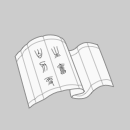
英文原版 Lives of the Painters, Sculptors and Architects 艺苑名人传 人人图书馆精装收藏版 英文版 进口英语原版书籍
书籍内容简介可联系客服查阅,查书找书开票同样可以联系客服
¥ 468 9.4折 ¥ 498 九五品
库存9件
广东广州
认证卖家担保交易快速发货售后保障
作者Vasari, Giorgio
出版社Everyman's Library
ISBN9780679451013
出版时间1996-11
装帧精装
定价498元
货号YB-1053
上书时间2024-03-13
- 最新上架
商品详情
- 品相描述:九五品
- 商品描述
-
内容摘要
书名:Lives of the Painters, Sculptors and Architects 艺苑名人传 作者:Giorgio Vasari 瓦萨里著,Gaston du C. de Vere翻译,David Ekserdjian作序 出版社名称:Everyman’s Library 出版时间:1996 语种:英文 ISBN:9780679451013 商品尺寸:14.1 x 10.8 x 21.8 cm 包装:精装 页数:2208 Lives of the Painters, Sculptors and Architects《艺苑名人传》原书名为Le vite de’ più eccellenti architetti, pittori, et scultori italiani, da Cimabue insino a’ tempi nostril《由契马布埃至当代优秀的意大利建筑师、画家、雕刻家的生平》,由文艺复兴时期艺术家米开朗基罗的学生、16世纪意大利知名画家和建筑师乔尔乔·瓦萨里创作,是一本被认为是西方严格意义上的第1本艺术史著作、传记,讲述了意大利的文化、艺术史。 1550年初次出版的这部《艺苑名人传》中,瓦萨里首次将“文艺复兴(Renacimlento)”一词及“艺术再生”的概念(rinascita of arts)用于探讨艺术史的分期问题,有人认为他是“文艺复兴”一词的首倡者。瓦萨里的观点,为后人将14-16世纪这段时间认定为文艺复兴时期奠定了基础。书中还探讨了绘画和雕塑、建筑的关系,揭示三者与“设计”(Design)之间存在着同等重要的联系,并将设计与比例关系结合起来讨论。这些学说为后人艺术形态学的研究以及从人与自然的关系探讨美学问题作了重要的铺垫。瓦萨里的论述强调了古希腊罗马艺术传统的重要性和经典地位,自此,奉古典艺术作品为圭臬成为欧洲美术史家一贯的作风,就这一点而言,瓦萨里可谓开了一代风气之先。 《艺苑名人传》总共讲述了260多位杰出艺术家的生平及其重要作品,可以说是一本文艺复兴艺术家的百科全书。时至今日,这部巨著仍是研究文艺复兴时期艺术、文化和社会的珍贵原始资料。该书的出版,也标志着瓦萨里在美术界话事权的获得,他的成就进一步为教廷、宫廷所承认,也从此开始担负起更多的社会责任和更大型的建筑、壁画工程设计任务。 A painter and architect in his own right, Giorgio Vasari (1511-74) achieved immortality for this book on the lives of his fellow Renaissance artists, first published in Florence in 1550. Although he based his work on a long tradition of biographical writing, Vasari infused these literary portraits with a decidedly modern form of critical judgment. The result is a work that remains to this day the cornerstone of art historical scholarship. Spanning the period from the thirteenth century to Vasari’s own time, the Lives opens a window on the greatest personalities of the period, including Giotto, Brunelleschi, Mantegna, Leonardo, Raphael, Michelangelo, and Titian. This Modern Library edition, abridged from the original text with notes drawn from earlier commentaries, as well as current research, reminds us why The Lives of the Most Excellent Painters, Sculptors, and Architects is indispensable to any student interested in Renaissance art. Lives of the Painters, Sculptors and Architects《艺苑名人传》是一部关于14-16世纪知名艺术家的传记,该书记载了从14世纪佛罗伦萨画家奇马布埃到16世纪的艺术巨匠米开朗基罗,共260多位杰出艺术家的生活故事、艺术实践和主要作品。瓦萨里通过大量的传记事实,刻画了一个个有血有肉的艺术家形象。同时书中介绍了诸多艺术门类,如建筑、雕塑、金饰、壁画、木板画、马赛克、彩色玻璃、版画等,并有不少创作细节的详细描述。瓦萨里因此书而被后人誉为“西方第1位艺术史家”。 乔尔乔·瓦萨里(Giorgio Vasari)是米开朗基罗的学生,公元1511年6月27日生于阿雷佐,1574年卒于佛罗伦萨,主要作品有《艺苑名人传》等。他提出可按14、15、16世纪划分美术发展的阶段,对后来的艺术理论研究造成巨大影响。他对于建筑、雕塑与壁画的贡献也是显著的。 Giorgio Vasari was born in 1511 at Arezzo in Tuscany. While still a boy he was introduced to Cardinal Silvio Passerini who put him to study in Florence with Michelangelo — who later became a close friend — then with Andrea del Sarto. He left Florence when his patron, Duke Alessandro, was assassinated, and wandered round Italy filling his notebooks with sketches; it was during this period that he conceived the idea of the Lives. By now, in his thirties, Vasari was a highly successful painter and when his Lives were published they were received enthusiastically. He returned to Florence in 1555 to serve Duke Cosimo who appointed him architect of the Palazzo Vecchio. After a grand tour of Italian towns he published the revised and enlarged edition of his Lives in 1568. Vasari spent the rest of his life in a glow of self-satisfaction and public recognition, and in 1971 he was knighted by Pope Pius V. He died in 1574. Philip Jacks, a leading scholar of the Italian Renaissance, is Associate Professor of Fine Arts and Art History at George Washington University and the author of several books. He also editedVasari’s Florence: Artists and Literati at the Medicean Court. Preface to the Lives I have no manner of doubt that it is with almost all writers a common and deeply-fixed opinion that sculpture and painting together were first discovered, by the light of nature, by the people of Egypt, and that there are certain others who attribute to the Chald?ans the first rough sketches in marble and the first reliefs in statuary, even as they also give to the Greeks the invention of the brush and of coloring. But I will surely say that of both one and the other of these arts the design, which is their foundation, nay rather, the very soul that conceives and nourishes within itself all the parts of man’s intellect, was already most perfect before the creation of all other things, when the Almighty God, having made the great body of the world and having adorned the heavens with their exceeding bright lights, descended lower with His intellect into the clearness of the air and the solidity of the earth, and, shaping man, discovered, together with the lovely creation of all things, the first form of sculpture; from which man afterwards, step by step (and this may not be denied), as from a true pattern, there were taken statues, sculptures, and the science of pose and of outline; and for the first pictures (whatsoever they were), softness, harmony, and the concord in discord that comes from light and shade. Thus, then, the first model whence there issued the first image of man was a lump of clay, and not without reason, seeing that the Divine Architect of time and of nature, being Himself most perfect, wished to show in the imperfection of the material the way to add and to take away; in the same manner wherein the good sculptors and painters are wont to work, who, adding and taking away in their models, bring their imperfect sketches to that final perfection which they desire. He gave to man that most vivid color of flesh, whence afterwards there were drawn for painting, from the mines of the earth, the colors themselves for the counterfeiting of all those things that are required for pictures. It is true, indeed, that it cannot be affirmed for certain what was made by the men before the Flood in these arts in imitation of so beautiful a work, although it is reasonable to believe that they too carved and painted in every manner; seeing that Belus, son of the proud Nimrod, about 200 years after the Flood, caused to be made that statue wherefrom there was afterwards born idolatry, and his son’s wife, the very famous Semiramis, Queen of Babylon, in the building of that city, placed among its adornments not only diverse varied kinds of animals, portrayed and colored from nature, but also the image of herself and of Ninus, her husband, and, moreover, statues in bronze of her husband’s father, of her husband’s mother, and of the mother of the latter, as Diodorus relates, calling them by the Greek names (that did not yet exist) Jove, Juno, and Ops. From these statues, perchance, the Chald?ans learned to make the images of their gods, seeing that 150 years later Rachel, in flying from Mesopotamia together with Jacob her husband, stole the idols of Laban her father, as is clearly related in Genesis. Nor, indeed, were the Chald?ans alone in making sculptures and pictures, but the Egyptians made them also, exercising themselves in these arts with that so great zeal which is shown in the marvelous tomb of the most ancient King Osimandyas, copiously described by Diodorus, and proved by the stern commandment made by Moses in the Exodus from Egypt, namely, that under pain of death there should be made to God no image whatsoever. He, on descending from the mountain, having found the golden calf wrought and adored solemnly by his people, and being greatly perturbed to see Divine honors paid to the image of a beast, not only broke it and reduced it to powder, but for punishment of so great a sin caused many thousands of the wicked sons of Israel to be slain by the Levites. But because not the making of statues but their adoration was a deadly sin, we read in Exodus that the art of design and of statuary, not only in marble but in every kind of metal, was bestowed by the mouth of God on Bezaleel, of the tribe of Judah, and on Aholiab, of the tribe of Dan, who were those that made the two cherubim of gold, the candlesticks, the veil, the borders of the priestly vestments, and so many other most beautiful castings for the Tabernacle, for no other reason than to bring the people to contemplate and to adore them. 1234567
— 没有更多了 —












以下为对购买帮助不大的评价